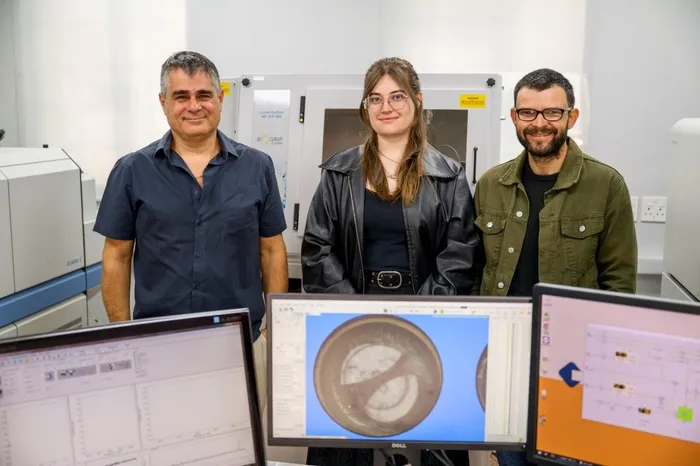Pioneering technique allows direct dating of fossilised dinosaur eggshells
DREAM DATING

An artistic reconstruction of a newly hatched troodontid-like dinosaur resting among fragments of its eggshell. These eggshells, when buried within ancient soil, interacted with meteoric waters, leading to early uranium incorporation into the eggshell calcite crystals.
Image: Eva Utsukiyouhei
An international team of geologists and paleontologists led by Dr Ryan Tucker from Stellenbosch University is revolutionising the field of paleontology with a novel methodology that directly dates fossilised dinosaur eggshells. This breakthrough, detailed in the journal Communications Earth & Environment, could reshape the understanding of how different species and ecosystems correlate across millions of years.
Traditionally, fossil sites worldwide have been only coarsely dated, leaving paleontologists in a quandary when trying to interpret the complex relationships between ancient species. Researchers have historically depended on dating surrounding minerals such as zircon or apatite, but these key indicators are not always available. Efforts to date the fossils directly have also frequently yielded imprecise results, particularly for bones and teeth.

From left to right: Prof Cristiano Lana, MSc student Kira Venter, and Dr Ryan Tucker of Stellenbosch University, who developed a novel method to age-date fossilized dinosaur eggs.
Image: Stefan Els
Dr Tucker's innovative team, which includes MSc student Kira Venter and Prof Cristiano Lana, employed advanced uranium–lead (U–Pb) dating and elemental mapping techniques. Their approach focused on trace amounts of uranium and lead within the calcite of fossilised dinosaur eggshells, providing a reliable natural clock to ascertain when these eggs were buried.
This pioneering methodology, developed using a Neoma Multi-Collector Inductively Coupled Plasma Mass Spectrometer (MC-ICP-MS) housed in SU’s Central Analytical Facilities, yielded a remarkable outcome. Tests conducted on dinosaur eggs from locations in Utah (USA) and the Gobi Desert (Mongolia) demonstrated that the eggshells could record ages accurate to about 5% relative to precise volcanic-ash dates. Notably, the team established the first-ever direct dating for a significant fossil site in Mongolia, revealing the eggs to be approximately 75 million years old.

Looking out across the exposed fossil-bearing Teel Ulaan Chaltsai, located in the Sainshand Sub-basin, Eastern Gobi Basin, Mongolia.
Image: Ryan Tucker
“Eggshell calcite is remarkably versatile,” commented Dr Tucker. “It gives us a new way to date fossil sites where volcanic layers are missing, a challenge that has limited paleontology for decades.”
The collaborative effort involved contributions from various prestigious organisations, including the North Carolina Museum of Natural Sciences, North Carolina State University, Colorado School of Mines, and the Mongolian Academy of Sciences' Institute of Paleontology. The fieldwork in Mongolia, a country known for its rich dinosaur heritage, was conducted through the Mongolian Alliance for Dinosaur Exploration (MADEx), supported by both the National Geographic Society and the National Science Foundation.
By confirming that dinosaur eggshells can effectively record the passage of geological time, this research bridges biology and Earth science, equipping researchers worldwide with a powerful new tool for dating fossil sites. Co-author and North Carolina State University associate research professor Lindsay Zanno remarked, “Direct dating of fossils is a paleontologist’s dream. Armed with this new technique, we can unravel mysteries about dinosaur evolution that used to be insurmountable.”
Stellenbosch University said as scientists worldwide continue to grapple with the complexities of Earth's prehistoric past, the direct dating of fossilised materials, once considered cumbersome, now shines like a beacon of hope for understanding the grandeur of evolutionary history.
This breakthrough in dating dinosaur eggshells not only opens new avenues for research but also holds the potential to enhance comprehension of ancient ecosystems and their interactions throughout the ages.
Related Topics: